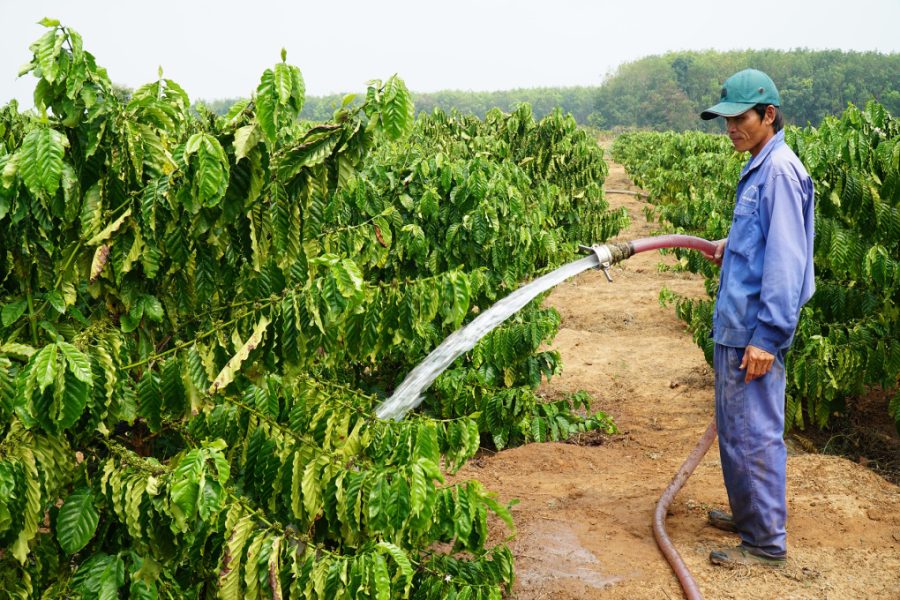Pepper market on May 15, 2024: Strong increase to 2,000-3,000 VND
Pepper price today May 15, 2024 increased by 500 - 1,000 VND. Currently, domestic pepper prices are trading around 103,000 - 104,000 VND/kg.
World pepper prices today May 15
Around the world, the pepper market on May 15 fluctuated in opposite directions.
Accordingly, the price of Lampung black pepper in Indonesia decreased slightly by 0.31%, down to 4,887 USD/ton. The country's Muntok white pepper price is anchored at 6,427 USD/ton.
Malaysia's Kuching ASTA black pepper price remained stable at 4,900 USD/ton; This country's ASTA white pepper is still priced at 7,300 USD/ton.
For the Brazilian market, the price of ASTA 570 black pepper increased sharply by 2%; up to 5,000 USD/ton.
In Vietnam, export prices of black pepper grades 500 and 550 g/l increased to 4,600 and 4,700 USD/ton, respectively. The export price of white pepper increased by 100 USD; up to 6,600 USD/ton.
| Pepper type | Price (Unit: USD/ton) | Change |
| Lampung black pepper (Indonesia) | 4,887 | -0.31% |
| Brazilian black pepper ASTA 570 | 5,000 | 2% |
| Kuching black pepper (Malaysia) ASTA | 4,900 | – |
| Muntok white pepper | 6,427 | -0.31% |
| ASTA Malaysian white pepper | 7,300 | – |
| Black pepper type 500 g/l Vietnam | 4,600 | – |
| Black pepper type 550 g/l Vietnam | 4,700 | – |
| Vietnamese white pepper | 6,600 | – |
World pepper prices today fluctuated unevenly with a slight decrease in Indonesia but a sharp increase in Brazilian black pepper. Meanwhile, other markets remained stable.
According to IPC, Malaysian pepper output in 2023 will reach about 23,000 tons, an increase of 5% compared to the previous year. Along with the increase in output, IPC also forecasts that Malaysia's pepper exports will increase this year.
Thus, world pepper prices on May 15, 2024 increased and decreased in opposite directions compared to yesterday.
Pepper prices today May 15 in the country
Domestically, the pepper market on May 15 increased simultaneously compared to yesterday.
Specifically, Dak Lak increased by 2,000 VND, purchasing pepper at a price of 106,000 VND/kg;
In Dak Nong, pepper price today increased slightly to 105,500 VND/kg.
Similarly, Gia Lai pepper price today increased sharply to 106,000 VND/kg;
Dong Nai traders bought pepper at a price of 105,000 VND/kg, an increase of 3,000 VND;
Similarly, the latest pepper price in Ba Ria - Vung Tau is 107,000 VND/kg;
In Binh Phuoc, traders increased 2,000 VND, trading pepper at 106,000 VND/kg.
Domestic pepper prices today increased slightly by 500 VND in Dak Nong and increased sharply by 1,000 VND in other key regions. Thereby bringing this agricultural product to the highest price at 106,000 VND/kg.
Vietnam's pepper consumption is still maintaining stability while selling prices are still on an increasing trend. According to data from VPSA, the amount of pepper exported in April was equivalent to March and the same period last year, about 26,000 tons.
The average export pepper price is at 4,437 USD/ton - the highest level since May 2022, and also marks a series of 11 consecutive months of increases.
In a recent report, the Import-Export Department also predicted that in the remaining months of the second quarter of 2024, our country's pepper exports will grow positively thanks to increased demand from European markets. Americas.
This agency also commented that the world pepper market has shown positive signs since the beginning of 2024. In addition to increased consumption demand, maintaining high pepper prices will also have a positive impact on the industry. Vietnamese pepper.
Thus, the domestic pepper price on May 15, 2024 is trading around 106,000 - 107,000 VND/kg.
According to Nongnghiep.vn














